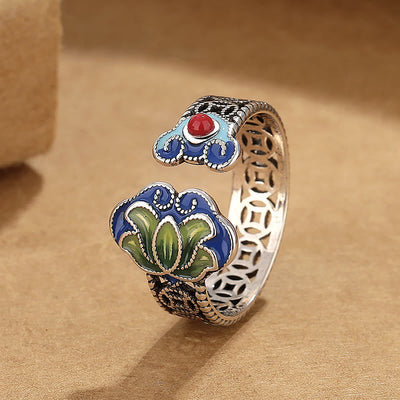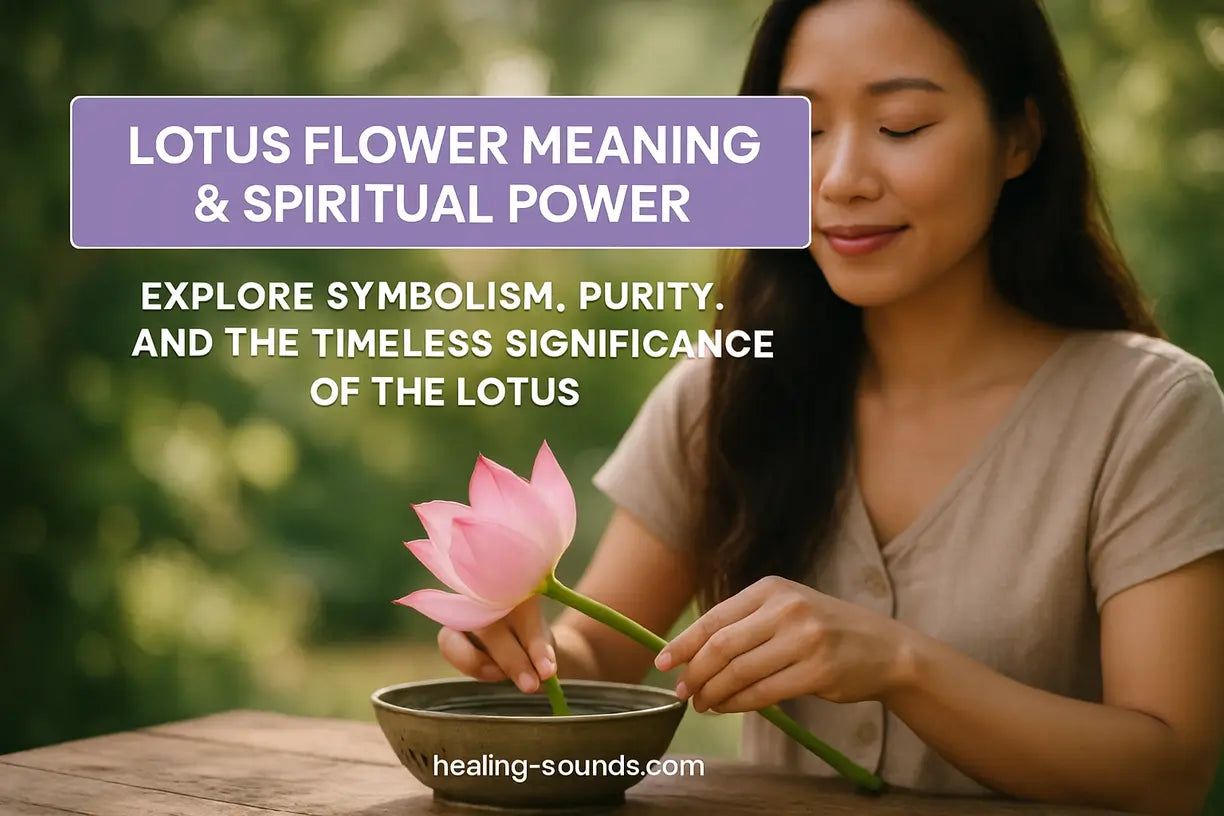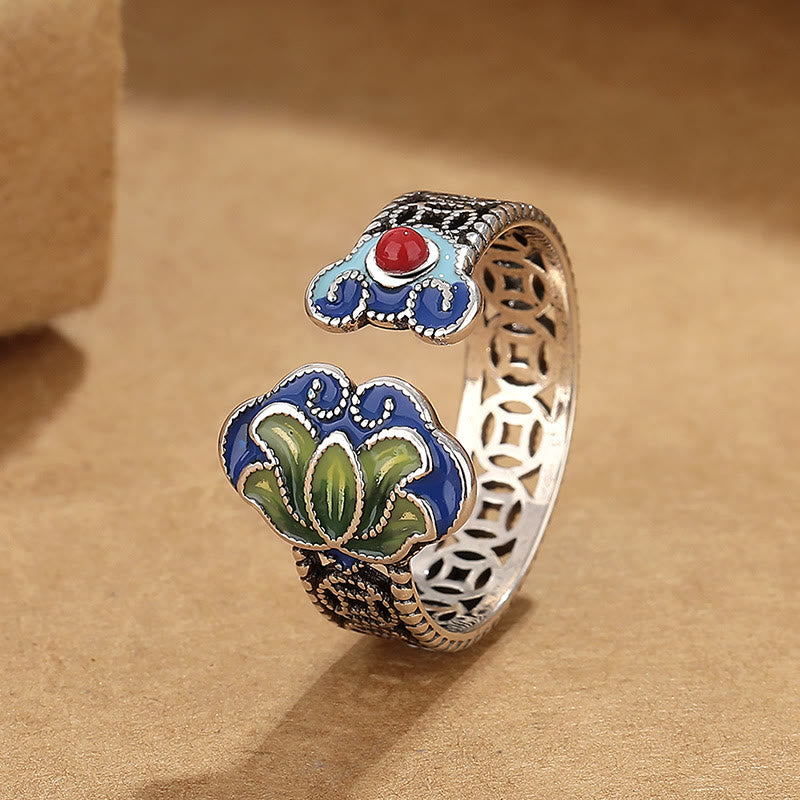From the murky depths of muddy waters, a pristine and beautiful flower emerges, untouched by the dirt from which it grows. This is the profound journey of the lotus flower, a timeless symbol revered across cultures for its incredible beauty and deep spiritual significance. More than just a plant, the lotus represents the journey of the soul—from the darkness of worldly suffering to the light of wisdom and enlightenment. If you've ever felt drawn to its serene petals, you're tapping into a powerful emblem of purity, resilience, and rebirth.
This guide will explore the complete symbolism of the lotus flower, uncovering its rich history and the powerful lessons it holds. We will delve into its meaning in different spiritual traditions, the significance of its various colors, and how you can integrate its inspiring energy into your own life. Get ready to understand why this sacred blossom continues to captivate hearts and minds on the path to personal transformation.
The Core Symbolism of the Lotus Flower
The lotus flower's most powerful meaning comes from its life cycle. It is a daily miracle of nature. Its roots are latched in mud, it submerges every night into murky river water, and—undeterred—it miraculously re-blooms the next morning, sparklingly clean. This journey has made it a potent symbol of several core concepts.
- Purity: Despite its muddy origins, the lotus blossom remains pure and unstained. This represents the purity of the heart and mind, and the ability to remain virtuous in a world filled with temptation and suffering.
- Spiritual Awakening & Enlightenment: The opening of the lotus petals symbolizes the awakening of the soul and the expansion of consciousness. It is a visual metaphor for attaining spiritual enlightenment and reaching a state of higher awareness.
- Rebirth & Renewal: The daily cycle of closing at night, sinking underwater, and rising again in the morning is a powerful symbol of rebirth, resurrection, and the promise of a new beginning. It teaches us that we can overcome adversity and start anew each day.
- Resilience & Strength: The ability of the lotus flower to push through thick mud to reach the light and air demonstrates immense strength, determination, and resilience. It is a reminder of our own inner power to overcome life's challenges.

What Makes the Lotus Flower So Special?
Beyond its profound symbolism, the lotus flower (Nelumbo nucifera) is a botanical marvel. Its unique ability to rise from the mud unstained is due to the waxy, protective layer on its petals, which repels dirt and water. This natural phenomenon, known as the "lotus effect," has even inspired self-cleaning industrial products. The plant's daily cycle of retracting into the water at night and re-emerging in the sun is a process called nyctinasty, which adds to its mystique.
The significance of the lotus flower is not just in its spiritual meaning but also in its ability to inspire peace and tranquility through its sheer beauty. Its perfectly symmetrical petals and serene presence have a calming effect on the mind, making it a focal point in meditation gardens and sacred art worldwide. It embodies a quiet, unwavering grace that is truly special.
The Significance of the Lotus Flower in Different Cultures
The reverence for the lotus spans continents and millennia, with each culture adding a unique layer to its symbolic meaning. Understanding these perspectives deepens our appreciation for this sacred flower.
In Buddhism
In Buddhism, the lotus is one of the most significant symbols. It represents the purity of the body, speech, and mind, floating above the muddy waters of attachment and desire. The Buddha is often depicted seated on a lotus throne, symbolizing his enlightened state. A closed bud represents the time before enlightenment, while a fully bloomed lotus signifies having achieved it. The symbolic meaning of the lotus flower here is a direct parallel to the spiritual journey of an individual.
In Hinduism
In Hinduism, the lotus, or 'Padma', is associated with divinity, fertility, prosperity, and beauty. The goddess Lakshmi, who presides over wealth and good fortune, is almost always shown with a pink lotus. The creator god, Brahma, is said to have been born from a lotus that emerged from the navel of Vishnu. Furthermore, the body's energy centers, or chakras, are often visualized as lotuses, with the crown chakra, Sahasrara, depicted as a "thousand-petaled lotus" representing the pinnacle of spiritual connection.

In Chinese and Japanese Culture
Both Chinese and Japanese cultures hold the lotus in high regard. In China, it is a symbol of purity, integrity, and the gentlemanly ideal, as it remains clean despite its environment. It features prominently in poetry and art as a metaphor for a noble character. In Japan, the lotus carries similar meanings of purity and enlightenment, deeply intertwined with Buddhist traditions. It represents the truth and beauty that can emerge from suffering, making it a cherished symbol in both secular and spiritual contexts.
Key Takeaway: Across cultures, the lotus consistently represents the idea that beauty and purity can arise from even the most challenging circumstances, offering a universal message of hope and transformation.

Adjustable Copper Lotus Flower Ring with Ruyi Handle Symbol
$24.90 $35.90
Embody lotus flower symbolism and spiritual growth daily with this copper lotus ring and Ruyi wish-granting detail
Explore ProductThe Meaning of Lotus Flower Colors
The color of a lotus adds another layer of meaning to its symbolism. Each hue corresponds to a different aspect of the spiritual journey, offering a more nuanced understanding of its message.
- White Lotus: Represents purity of mind, serenity, and spiritual perfection. It is often called the "Womb of the World" and is connected to a state of complete mental clarity.
- Pink Lotus: Considered the supreme lotus, it is reserved for the highest deities in Hinduism and is the truest representation of the Buddha. It symbolizes love, compassion, and the heart's true nature.
- Red Lotus: This lotus is associated with the qualities of the heart. It symbolizes love, passion, compassion, and generosity. It is a flower of pure, selfless love.
- Blue Lotus: A symbol of the victory of the spirit over the senses. It represents wisdom, knowledge, and intelligence. It is always depicted as partially open, signifying that the pursuit of knowledge is never-ending.
- Purple Lotus: Often associated with mysticism and esoteric traditions. Its eight petals are representative of the Noble Eightfold Path of Buddhism, a key principle for achieving spiritual awakening.
Integrating Lotus Flower Symbolism into Your Life
The teachings of the lotus flower are not just ancient stories; they are practical guides for modern life. You can actively invite its energy of resilience and purity into your daily routine.
In Meditation and Mindfulness
Visualize a lotus flower in your heart's center during meditation. As you breathe, imagine its petals slowly unfurling, releasing any negativity or "mud" from your life and revealing your pure, radiant inner self. This simple practice can help you cultivate a sense of peace and strength from within.
Through Symbolic Objects
Surrounding yourself with the lotus flower symbol can be a powerful daily reminder of your own potential. Wearing lotus jewelry, using a lotus-themed mug for your morning tea, or placing lotus art in your sacred space can help keep its message of hope and perseverance at the forefront of your mind.

As a Tattoo Symbol
For those seeking a permanent emblem of their journey, a lotus flower tattoo is a deeply meaningful choice. It often symbolizes having overcome personal adversity, a commitment to a spiritual path, or the constant process of personal growth and renewal. The choice of an unopened bud, a partially open flower, or a full bloom can represent the specific stage of one's journey.
Embrace the Lotus Energy

6mm Pink Crystal Lotus Bracelet with Yellow Chalcedony
$24.90
$35.90
Channel the rebirth and enlightenment of the lotus with this nurturing pink crystal and yellow chalcedony bracelet Learn more ➔

Zen Ceramic Tea Cup with Dragon and Nature Motifs
$47.90
$68.90
Invite lotus-inspired serenity to your tea meditation with this artisan cup featuring delicate lotus and nature designs Learn more ➔
Conclusion: Embrace Your Inner Lotus
The lotus flower is far more than a beautiful plant; it is a profound spiritual teacher. Its journey from the dark, murky mud to a radiant, pristine blossom in the sun is a perfect metaphor for our own human potential. It teaches us that no matter our circumstances, we have the inner strength and resilience to rise above our challenges, purify our hearts and minds, and bloom into our most enlightened selves.
By understanding the rich lotus flower meaning and integrating its symbolism into our lives, we can find constant inspiration for our personal growth. Let the lotus be your guide on the path to renewal, reminding you that every day offers a new opportunity to bloom.
Frequently Asked Questions about Lotus Flower Symbolism
The lotus flower symbolizes purity, spiritual enlightenment, rebirth, and resilience. Its ability to emerge from muddy waters perfectly clean represents the purity of the mind and spirit, while its daily cycle of blooming symbolizes renewal and the journey out of darkness (suffering) into light (wisdom).
What's special about the lotus is its incredible life cycle, which gives it profound symbolic meaning. It grows in mud, submerges into murky water each night, and re-emerges clean and beautiful each morning. This powerful display of purity and resilience has made it a sacred symbol of spiritual growth and enlightenment in many cultures, particularly in Buddhism and Hinduism.
The lotus flower is significant in both Chinese and Japanese cultures, as well as many other parts of Asia. Its symbolism was largely introduced to both regions through the spread of Buddhism. In China, it also holds cultural significance related to purity and nobility, while in Japan, its meaning is deeply tied to Buddhist teachings of enlightenment.
In a tattoo, a lotus flower often symbolizes a personal journey of overcoming adversity and achieving personal or spiritual growth. It represents rising above challenges (the mud) to find beauty and enlightenment. The state of the bloom—a bud, partially open, or fully bloomed—can signify different stages of the owner's life path.
In Buddhism, the lotus has immense significance. It symbolizes the purity of the body, speech, and mind, floating free from the muddy waters of attachment, desire, and suffering. The Buddha and other enlightened beings are often depicted on a lotus throne, signifying their transcendent, pure state, completely free from the defilements of the world.







